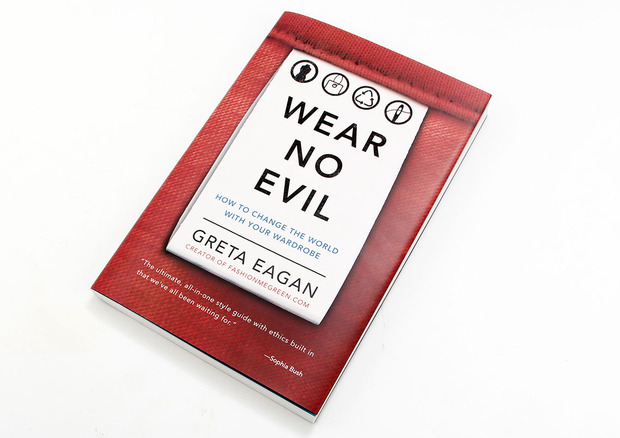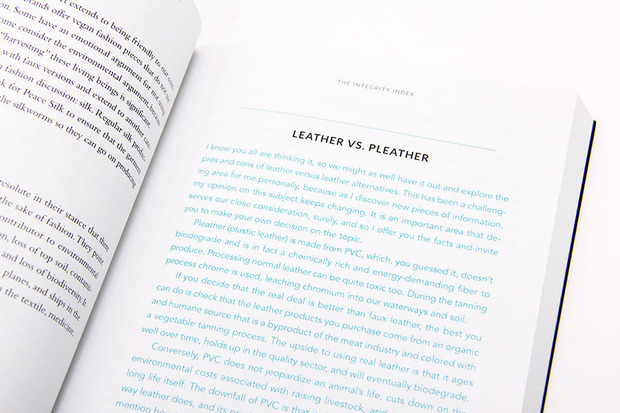Wear No Evil
A new book from Greta Eagan shows that sustainability and style are no longer mutually exclusive


According to the US Environmental Protection Agency, an estimated 14.3 million tons of textiles waste were generated in 2012—that’s not necessarily something you think about when trying to wiggle into a pair of jeans in the fitting room. There have been great creative results in world of sustainable fashion, including fully biodegradable sneakers to Scandinavian couture pieces made from 100% reused fabrics, which serve as a response to the fashion industry’s detrimental pollution footprint. And, as more designers and brands opt for sustainable and organic materials and local production, green fashion is proving that it’s not just a trendy grassroots movement but the future of apparel design.
Breaking down all the currently available eco-conscious options is “Wear No Evil,” a style guide written by eco-fashion blogger-turned-stylist and entrepreneur Greta Eagan. As Eagan learned more about the industry and production as a student at London College of Fashion, she struggled to accept the industry’s sheer waste and the unethical treatment of workers and farmers. Dedicating her dissertation to sustainability in fashion, Eagan now shares her wisdom (and taste) with others, explaining that style no longer has to be sacrificed when leading a greener lifestyle.

“The biggest change I’ve noticed in the eco-fashion space over the past three years is the amount of options,” says Eagan, noting that there’s a lot more than just “frumpy hemp T-shirts” available now. “Everyone from H&M with their Conscious Collection to Of A Kind and their community voting model—to put pieces guaranteed to sell into production, thereby eliminating overstock waste—are participating in the space in a way that inherently works for them and their customer. Brands are also learning that we, the consumer, want to hear their backstory. Every time we buy something, we are voting with our dollars to support that production and it sends a strong message to brands. Transparency is huge in helping establish the trust of loyal customers.”

Eagan recommends three ways for consumers to become more conscious when it comes to clothing: “1. Buy secondhand when you can. Purchasing something that already exists is the most sustainable thing you can do. 2. Support organic; by supporting organic products (and therefore production) we protect our soil, our water, and the people in the fields who harvest. 3. Look for recycled material use. You can find all kinds of clothing incorporating recycled polyester just by checking the tag. Some very cool and interesting designs are born in this space as the materials to work with are limited and instruct the end product in a way that traditional design doesn’t.” For more tips on transitioning into a green wardrobe, “Wear No Evil” offers recommendations on which brands to shop based on what you’re looking for—from T-shirts to handbags and even beauty products—so that you can easily consume fashion more ethically.
Published by Running Press, “Wear No Evil” is available from Amazon for $13.
Book photos by CH, portrait image courtesy of Michael Chung












